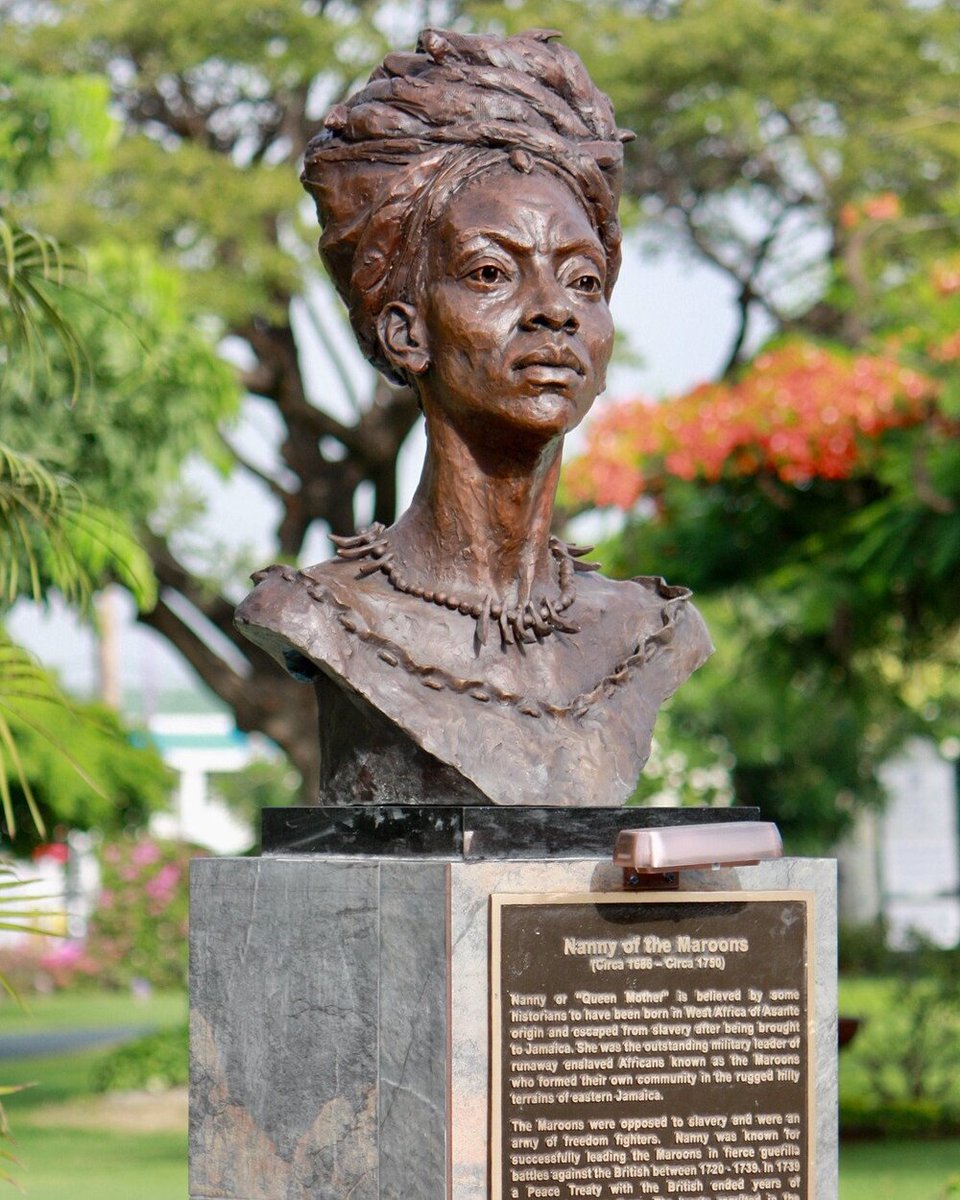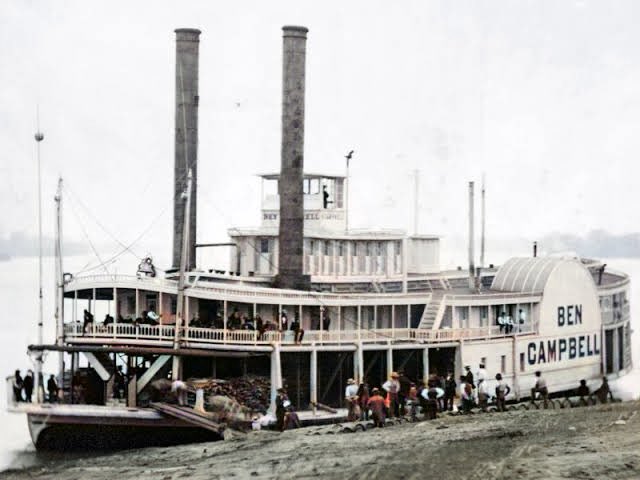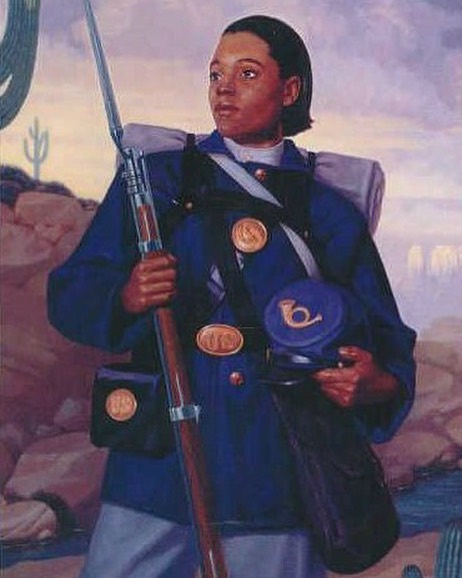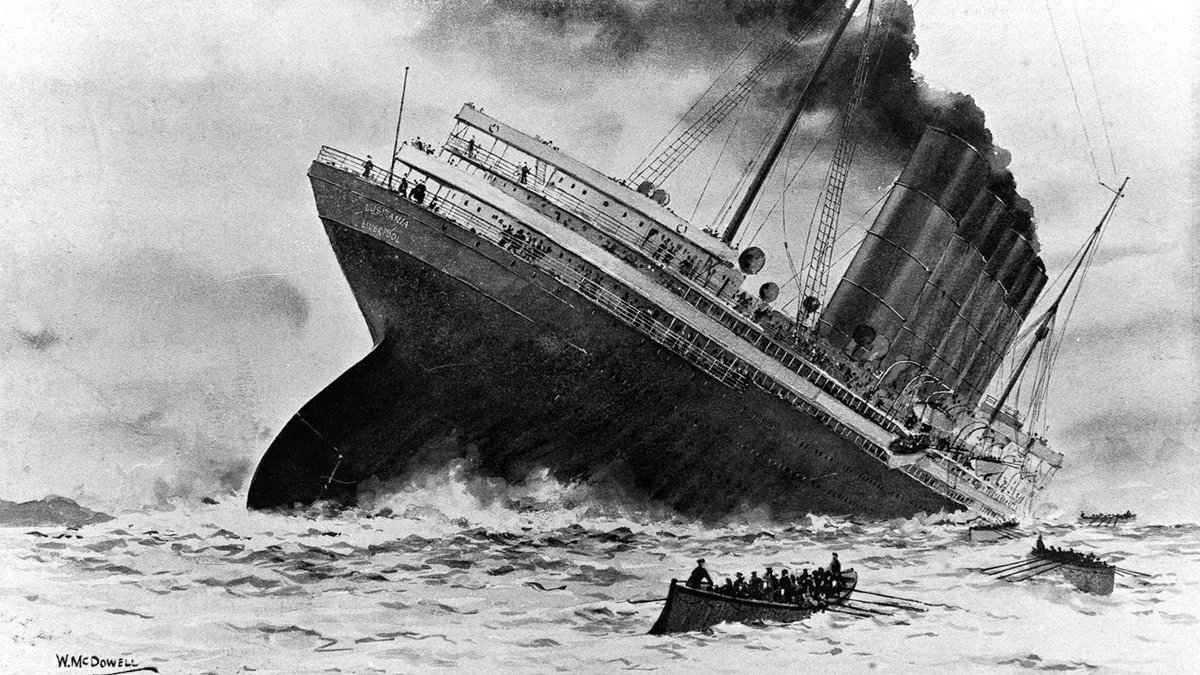
Queen Nanny Of The Maroons: Ashanti Woman who Fought And Freed Over 1,000 Enslaved Africans In Jamaica. #BlackHistoryMonth
A THREAD!

A THREAD!


Nanny also known as Queen Nanny was a Maroon leader in Jamaica during the late 17th and early 18th centuries. Enslaved Africans who escaped & established independent settlements in the Americas were known as maroons.
Nanny was a runaway slave from Western Africa who had been sold into slavery. It is usually assumed that she was born into the Ashanti tribe of modern-day Ghana.
She and her 4 brothers (all of whom went on to become Maroon leaders) were sold into slavery and eventually escaped to the highlands that still make up much of Jamaica. Nanny and one of her brothers, Quao, established Nanny Town in the Blue Mountains on Eastern side of Jamaica.
Nanny Town thrived because of its remote location in the highlands, far from European villages & difficult to attack. Nanny avoided attacking plantations and European towns, preferring instead to farm and trade with her neighbors in a civilized manner.
She did, however, conduct multiple successful raids to free slaves trapped on plantations and her actions resulted in the emancipation of over 1,000 slaves during her lifetime.
Nanny & the Windward Maroons flourished and multiplied during Nanny’s lifetime. The triumph of the Maroons threatened the British colonial authorities. Plantation owners demanded action from colonial officials after losing slaves.
The Jamaican jungles were searched by hunting groups made up of British regular army soldiers, militias & mercenaries. Captain William Cuffee, often known as Captain Sambo, is said to have murdered Nanny in one of the war’s many brutal battles in 1733.
The war lasted from 1720 to 1739, when a truce was declared; Cudjoe, one of Nanny’s brothers and a Maroon War leader, was the driving force behind the treaty.
Following Nanny’s death, many Windward Maroons relocated to the more sparsely populated Western (or Leeward) part of the island. The British eventually seized Nanny Town and destroyed it in 1734.
If you love black history:
-Follow me for more of these
-You can also support my page through donations/tips on ko-fi.com/africanarchives
-Follow me for more of these
-You can also support my page through donations/tips on ko-fi.com/africanarchives
• • •
Missing some Tweet in this thread? You can try to
force a refresh
















